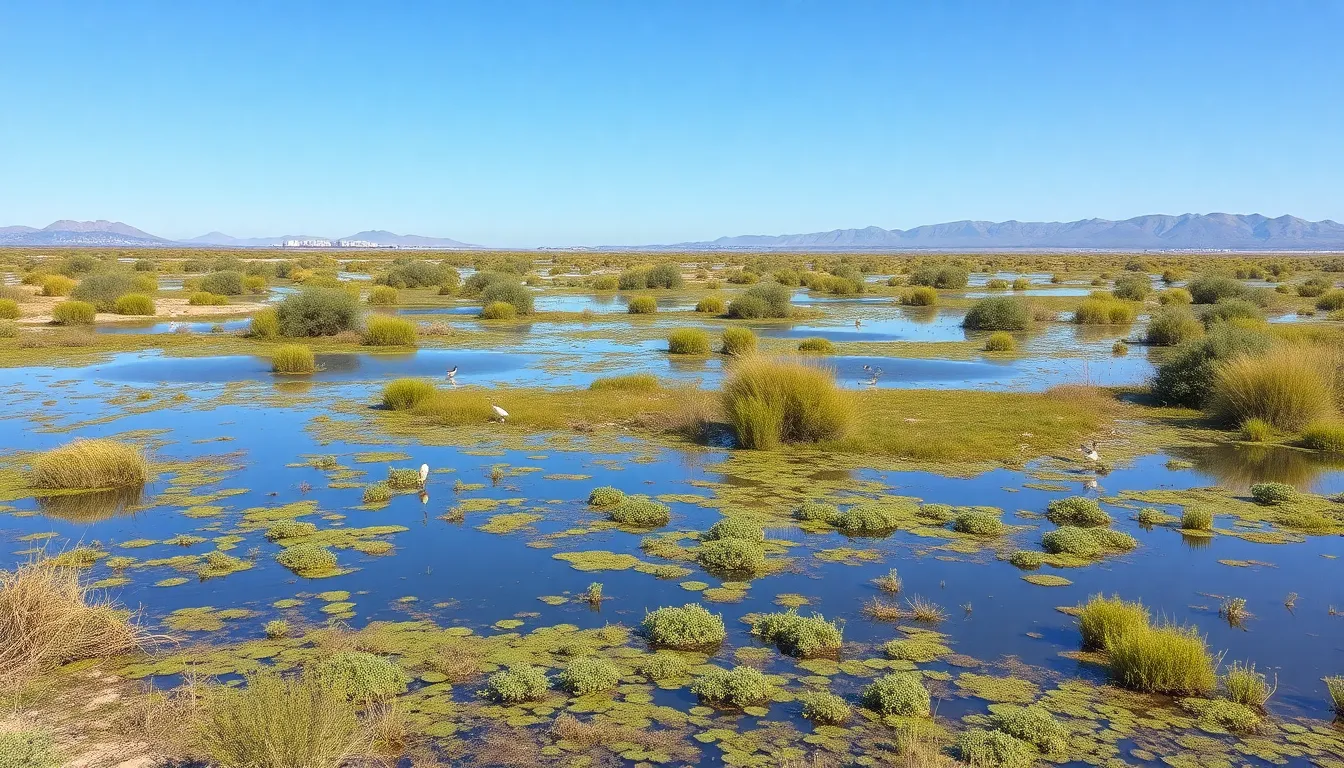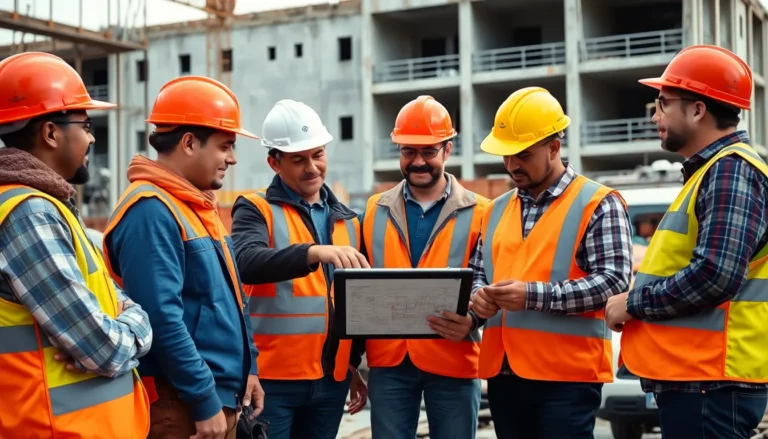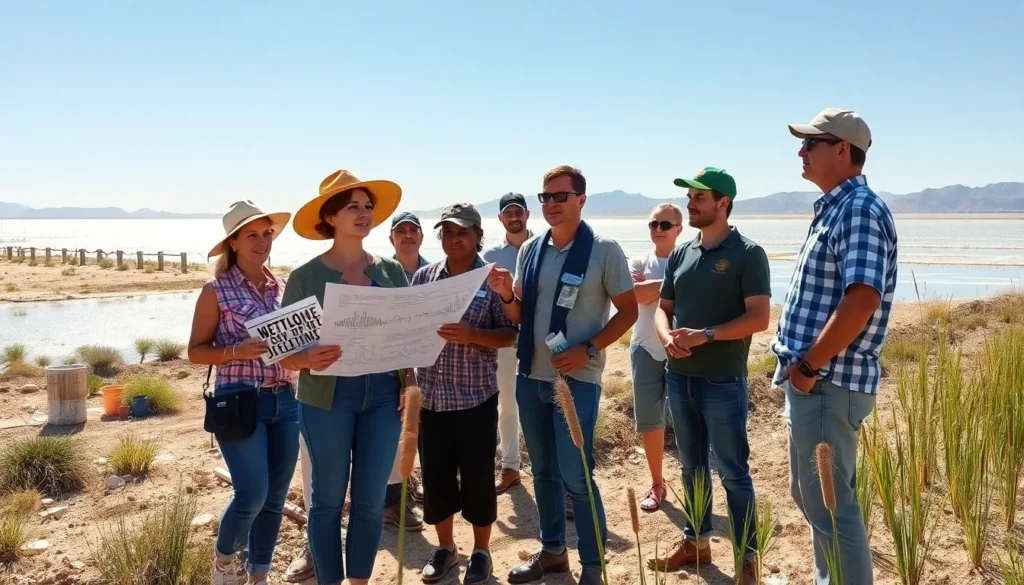Table of Contents
ToggleThe Salton Sea, once a thriving ecosystem, faces significant environmental challenges that threaten its future. Over the years, declining water levels and increasing salinity have led to habitat loss and declining wildlife populations. Amidst this crisis, the Salton Sea Restoration Wetlands Project emerges as a beacon of hope, aiming to revitalize this vital area while addressing pressing ecological issues.
This ambitious project seeks to create sustainable wetlands that not only restore the natural habitat but also improve air quality and support local communities. By focusing on innovative restoration techniques, it promises to breathe new life into the Salton Sea, fostering biodiversity and enhancing the region’s resilience against climate change. As efforts to revitalize this unique ecosystem unfold, the project’s potential impact extends beyond environmental restoration, offering a glimpse into a healthier future for both wildlife and residents alike.
Overview of the Salton Sea Restoration Wetlands Project
The Salton Sea Restoration Wetlands Project targets critical environmental issues threatening the Salton Sea ecosystem. The initiative aims to establish sustainable wetlands that will enhance wildlife habitats, improve air quality, and foster community well-being.
The project employs innovative restoration techniques, such as constructing shallow ponds and reintroducing native vegetation. These methods promote biodiversity by creating suitable environments for various species, including migratory birds and aquatic life.
Collaborative efforts among governmental agencies, non-profit organizations, and local communities drive the project’s success. Partnerships help leverage resources and expertise, ensuring the implementation of effective strategies for habitat restoration.
Additionally, the project contributes to climate resilience by creating adaptive ecosystems better equipped to withstand changing environmental conditions. Focused on enhancing both wildlife and human health, the Salton Sea Restoration Wetlands Project represents a critical step toward revitalizing this vital region.
Overall, the project stands as a beacon of hope, embodying the commitment to restoring the Salton Sea’s ecological balance and supporting the livelihoods of those who depend on its resources.
Goals and Objectives

The Salton Sea Restoration Wetlands Project aims to address environmental and economic challenges while fostering ecological sustainability.
Environmental Impact
The project targets the restoration of native habitats to support diverse wildlife populations. Creating sustainable wetlands promotes water quality enhancement and reduces salinity levels. Implementing innovative restoration techniques, such as shallow ponds and native vegetation growth, increases biodiversity and strengthens ecosystem resilience. Improved air quality measures decrease dust emissions, which positively impacts public health in surrounding communities. This initiative not only restores habitats but also mitigates the effects of climate change on the region.
Economic Benefits
The project generates economic opportunities through job creation in construction and maintenance of wetlands. It supports local tourism by enhancing natural landscapes, attracting visitors for birdwatching and other recreational activities. The initiative promotes sustainable fishing practices, benefiting local fisheries and enhancing food supply chains. Collaborative partnerships among governmental agencies, non-profits, and local communities maximize resource utilization, ensuring long-term economic vitality in the region. These efforts contribute to a stable economy while safeguarding environmental resources.
Project Phases and Timeline
The Salton Sea Restoration Wetlands Project unfolds through distinct phases to ensure effective execution. This structured approach enables systematic progress toward environmental revitalization.
Initial Assessments
Initial assessments involve comprehensive evaluations of the Salton Sea’s ecological conditions. These assessments include water quality analysis, habitat mapping, and biodiversity surveys. Teams collect baseline data to identify critical areas needing restoration. Moreover, stakeholder engagement promotes collaboration and gathers local input, enhancing project relevance. These evaluations lay the groundwork for informed decision-making.
Implementation Strategies
Implementation strategies focus on specific techniques tailored to achieve desired outcomes. Construction of shallow ponds and wetlands fosters native vegetation growth. Introducing plant species like bulrush and cattail enhances habitat diversity. Regular monitoring establishes baseline metrics to track progress and effectiveness. Engaging local communities facilitates job creation in construction and ongoing maintenance. Partnerships with governmental agencies and non-profits ensure resource optimization for long-term success.
Challenges and Considerations
The Salton Sea Restoration Wetlands Project faces several hurdles that require careful consideration. These challenges include ecological issues and the need for adequate funding and resource allocation.
Ecological Issues
Ecological restoration poses significant challenges, particularly due to the Salton Sea’s extreme salinity levels and fluctuating water availability. Habitat loss threatens native flora and fauna, complicating reintroduction efforts. Invasive species further disrupt native ecosystems, necessitating focused management strategies. Additionally, interactions between restored wetlands and surrounding agricultural runoff could introduce contaminants, impacting water quality. Close monitoring and adaptive management of restoration activities ensure ecological integrity and sustainability.
Funding and Resource Allocation
Funding poses a crucial challenge for the Salton Sea Restoration Wetlands Project. Securing consistent funding sources remains vital for effective implementation and long-term maintenance. Diverse funding streams, including federal and state grants, private investments, and philanthropic support, help address financial gaps. Efficient resource allocation ensures that project phases, from planning through execution, receive adequate financing. Collaboration among governmental agencies, non-profit organizations, and local stakeholders enhances funding stability and maximizes the impact of allocated resources, supporting sustainable project outcomes.
Stakeholder Involvement
Stakeholder involvement is crucial to the success of the Salton Sea Restoration Wetlands Project. Engaging local communities and collaborating with governmental and nonprofit organizations ensures a multifaceted approach to restoration efforts.
Community Engagement
Community engagement fosters involvement among local residents in the restoration efforts. Residents participate in workshops and informational sessions, enabling them to express their concerns and ideas. Engaging volunteers for restoration tasks, such as planting native vegetation or monitoring wildlife, strengthens community ties and encourages stewardship. Additionally, educational programs raise awareness of the ecological significance of the Salton Sea, promoting sustainable practices and fostering a collective approach to resource management. Feedback from community members helps shape project implementation, ensuring the initiatives reflect the needs and aspirations of those directly affected by the restoration efforts.
Government and Nonprofit Organizations
Government and nonprofit organizations play a pivotal role in the project’s execution. Government agencies, including federal and state departments, contribute funding and technical expertise to support restoration efforts. They facilitate regulatory processes, ensuring compliance with environmental standards. Nonprofit organizations bring additional resources, volunteer networks, and community connections that enhance project visibility and outreach. Collaborative partnerships among these groups create a comprehensive support system, pooling resources for research, habitat restoration, and ongoing monitoring. Together, these stakeholders drive strategic planning and effective implementation, ensuring that the project achieves its goals of ecological revitalization and community benefit.
The Salton Sea Restoration Wetlands Project stands as a beacon of hope for both the environment and local communities. By focusing on sustainable practices and innovative restoration techniques, it seeks to revitalize an area facing significant ecological challenges. The collaborative efforts of stakeholders ensure that diverse voices are heard and that the project remains adaptable to changing conditions.
As the project progresses, its potential to enhance biodiversity and promote economic opportunities becomes increasingly evident. With ongoing support and engagement from all involved, the Salton Sea can transform into a thriving ecosystem that benefits wildlife and residents alike. The future of this unique region depends on the success of such initiatives, making the Salton Sea Restoration Wetlands Project a crucial endeavor for generations to come.







